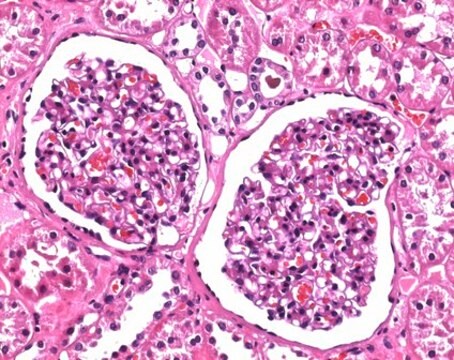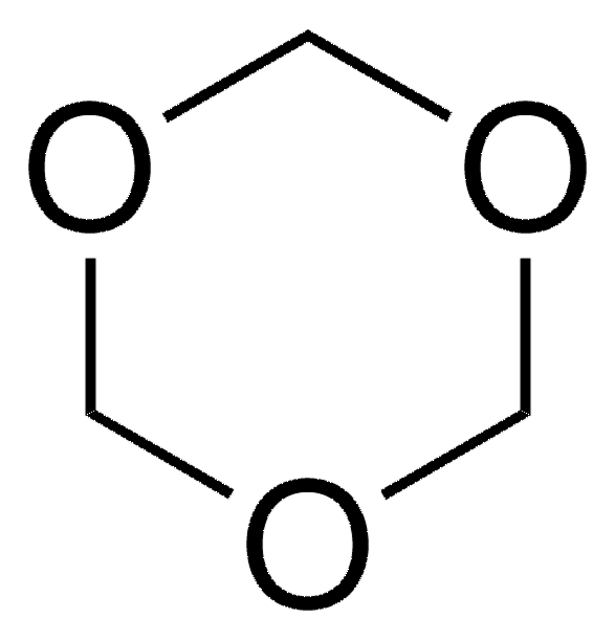16005
Paraformaldehyde
meets analytical specification of DAC, 95.0-100.5%
Sinonimo/i:
Polyoxymethylene
About This Item
Prodotti consigliati
Densità del vapore
1.03 (vs air)
Livello qualitativo
Tensione di vapore
<1.45 mmHg ( 25 °C)
Saggio
95.0-100.5%
Forma fisica
pellets
Temp. autoaccensione
572 °F
Qualità
meets analytical specification of DAC
Limite di esplosione
73 %
tecniche
NMR: suitable
Impurezze
residual solvents, in accordance
<0.1% sulfated ash
10 ppm heavy metals (as Pb)
Punto di fusione
120-170 °C (lit.)
Solubilità
water: insoluble
Densità
0.88 g/mL at 25 °C (lit.)
Compatibilità
in accordance for appearance of solution
suitable for acidity or alkalinity (complying)
Temperatura di conservazione
2-8°C
InChI
1S/CH2O/c1-2/h1H2
WSFSSNUMVMOOMR-UHFFFAOYSA-N
Cerchi prodotti simili? Visita Guida al confronto tra prodotti
Categorie correlate
Descrizione generale
Applicazioni
Avvertenze
Danger
Indicazioni di pericolo
Classi di pericolo
Acute Tox. 4 Inhalation - Acute Tox. 4 Oral - Carc. 1B - Eye Dam. 1 - Flam. Sol. 2 - Muta. 2 - Skin Irrit. 2 - Skin Sens. 1 - STOT SE 3
Organi bersaglio
Respiratory system
Codice della classe di stoccaggio
4.1B - Flammable solid hazardous materials
Classe di pericolosità dell'acqua (WGK)
WGK 2
Punto d’infiammabilità (°F)
Not applicable
Punto d’infiammabilità (°C)
Not applicable
Dispositivi di protezione individuale
Eyeshields, Faceshields, Gloves, type P3 (EN 143) respirator cartridges
Scegli una delle versioni più recenti:
Possiedi già questo prodotto?
I documenti relativi ai prodotti acquistati recentemente sono disponibili nell’Archivio dei documenti.
I clienti hanno visto anche
Il team dei nostri ricercatori vanta grande esperienza in tutte le aree della ricerca quali Life Science, scienza dei materiali, sintesi chimica, cromatografia, discipline analitiche, ecc..
Contatta l'Assistenza Tecnica.










